Notogomphus kimpavita Dijkstra & Clausnitzer, 2015
Angola Longleg
Type locality: Uíge, Cunga-Quiximba, Angola
Diagnosis
Male shares only with N. praetorius (a) the dark smudges below the crest of the frons, which however may be absent in either species; (b) the dark streak on the metepisternum abutting but separate from the interpleural markings; (c) the strongly diverging cerci bent inward at their finely pointed apices; and also falls within that species’ size-range of Hw 29.0-33.0 mm (n = 5) with (d) Hw 31.5-32.5 mm (n = 3). However is much darker, mainly black with green markings rather than yellow marked with black, including (1) the largely green face with a dark anterior border to the labrum, a distinctive pattern within the genus; (2) the pale postdorsal stripes shifted middorsally and the ante-humeral stripes narrower, leaving a much broader black area between them; (3) the thick and nearly complete black interpleural stripe running anteriorly of the metastigma; (4) the largely black rather than yellow-streaked femora and tibiae; (5) the black rather than yellow costa; and (6) the largely black abdomen with only S1-2 extensively green, rather than all segments with broad lateral and dorsal yellow stripes over their full lengths. Morphologically distinct by (7) the medially clearly raised and pointed border of the occiput; (8) the large ventro-lateral tooth of the cerci, rather than a round swelling and reduced tooth; and (9) the reduced paraprocts falling short of the epiproct, rather than extended into acute points that reach clearly beyond it. [Adapted from Dijkstra, Kipping & Mézière 2015]
Habitat description
Streams shaded by, or in open areas in, forest. Usually with coarse detritus and probably often a gravelly, sandy and/or soft (like muddy) bottom. From 600 to 1200 m above sea level.
Distribution
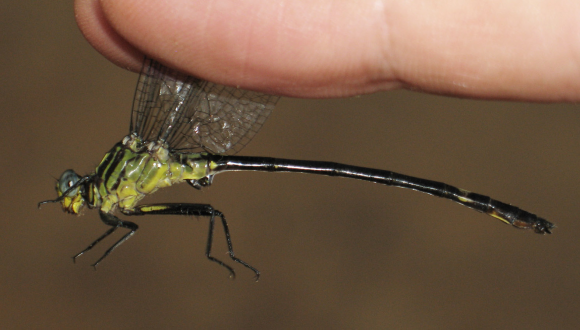
Male
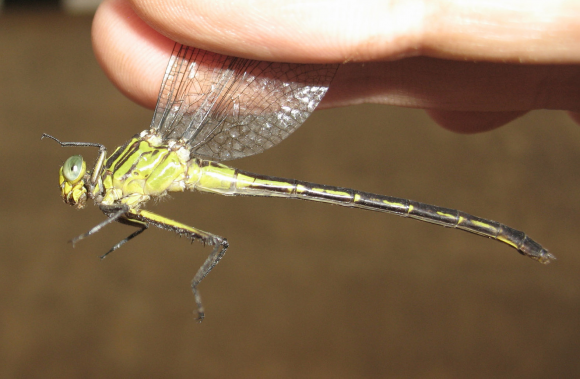
Female
Map citation: Clausnitzer, V., K.-D.B. Dijkstra, R. Koch, J.-P. Boudot, W.R.T. Darwall, J. Kipping, B. Samraoui, M.J. Samways, J.P. Simaika & F. Suhling, 2012. Focus on African Freshwaters: hotspots of dragonfly diversity and conservation concern. Frontiers in Ecology and the Environment 10: 129-134.
Barcode specimen(s):
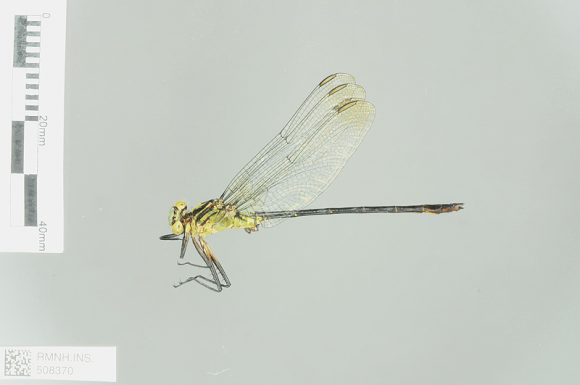
Adult, male; Angola, Uige Province, new campus site and environs © Dijkstra, K.-D.B.
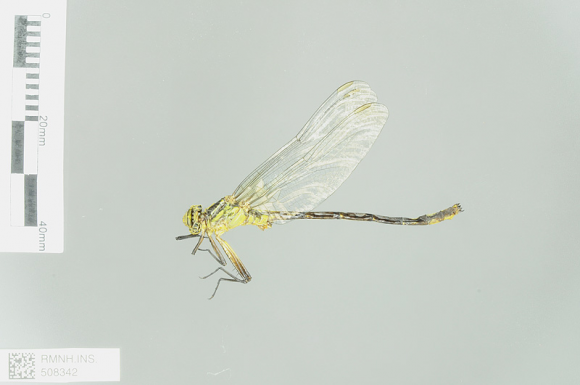
Adult, male; Angola, Uige Province, new campus site and environs © Dijkstra, K.-D.B.
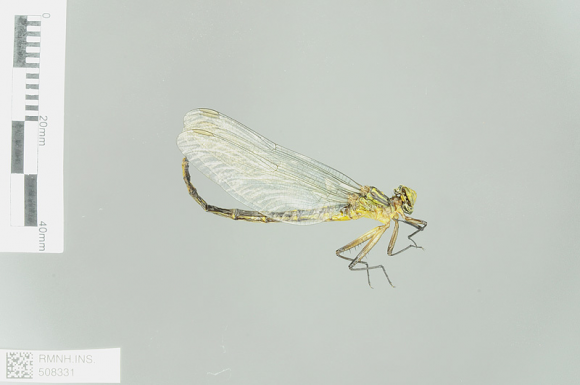
Adult, female; Angola, Uige Province, new campus site and environs © Clausnitzer, V. & Dijkstra, K.-D.B.
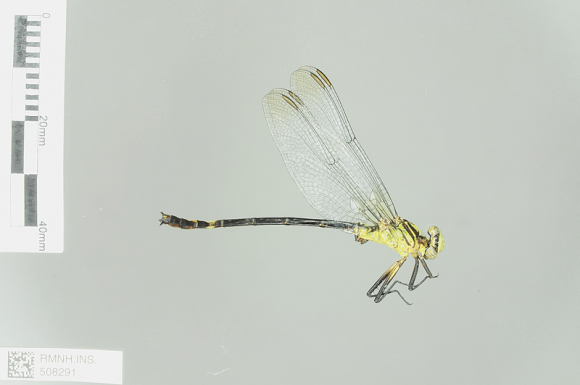
Adult, male; Angola, Uige Province, new campus site and environs © Clausnitzer, V. & Dijkstra, K.-D.B.
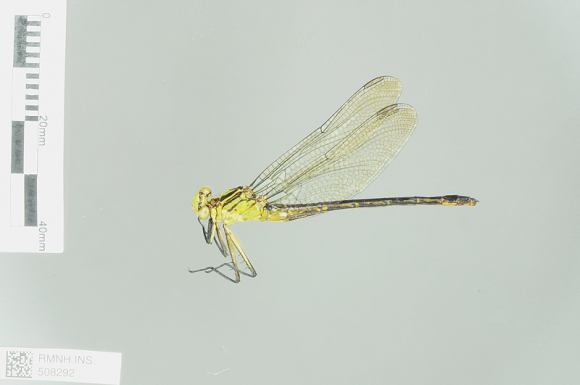
Adult, female; Angola, Uige Province, new campus site and environs © Clausnitzer, V. & Dijkstra, K.-D.B.
Reference
- Dijkstra, K.-D.B., Mézière, N., and Kipping, J. (2015). Sixty new dragonfly and damselfly species from Africa (Odonata). Odonatologica, 44, 447-678.
Citation: Dijkstra, K.-D.B (editor). African Dragonflies and Damselflies Online. http://addo.adu.org.za/ [2024-10-30].

